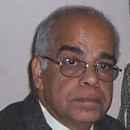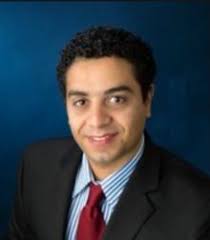Sessions & Tracks
Track 01: Aerospace
The aerospace industry is concerned with human efforts in science, engineering, and business to fly in the Earth's atmosphere and the space around it (aeronautics).Organizations in the aerospace industry research, design, manufacture, operate, or maintain spacecraft and aircraft. There are a wide range of commercial, industrial, and military uses for aerospace activity. Astronautical Engineering and Aeronautical Engineering are two important branches of aerospace engineering that overlap. The need for clean technologies, such as carbon capture and storage, investment in renewable energy sources, and alternative fuels, will be addressed by the Field of Aerospace Engineering. Research institutions play a crucial role in aerospace activities because the development of aviation and space missions is based on a continuous technological progress that affects a variety of disciplines like aerodynamics, propulsion, materials, avionics, communication, airports, and air navigation, among others. Space technology has become increasingly important as a result of the great development and rapid progress in information and communication technology as well as the technology of space exploration. Universities, aerospace companies, and public institutions provide the majority of the fulfillment for the research activity.
Track 02: Aeronautics
The study of the science of flight is called aeronautics. The process of designing an airplane or other flying machine is known as aeronautics. Aeronautical engineers must be familiar with four fundamental concepts in order to design aircraft. To plan a plane, engineers should see these components. These incorporate Strength and control, Materials and designs, Impetus and Streamlined features. Aeronautical engineering is the study, construction, and design of aircraft designed to stay in the earth's atmosphere while carrying out the necessary operations and tasks. Helicopters and airplanes are among these aircraft. The study, design, and production of airplanes or other aviation vehicles are based on aeronautics. Aeronautics also includes research into how to operate aircraft in the atmosphere of the earth. Aeronautical engineers build new aircraft using engineering principles and concepts to incorporate the most cutting-edge technologies. Aerodynamics, a branch of dynamics that studies how air moves and how it interacts with moving objects like aircraft, is an important part of aeronautical science.
Track 03: Astronautics
The broad application of science and engineering to aerospace operations is known as astronautical engineering. Astronautical engineering frequently addresses the fundamental design, manufacturing, and science of aircraft required for operation outside the earth's atmosphere. Space stations and rocket satellites typically fall under the purview of this subfield of aerospace engineering. Applications in space must be able to withstand extreme conditions due to the constraints of mass, temperatures, and external forces, just like in aeronautics.Outrageous imperatives on mass reason astronautical architects to confront the steady need to save mass in the plan to amplify the genuine payload that arrives at circle. Astrodynamics, spacecraft propulsion, spacecraft design, the space environment, and so on are just a few of the many distinct fields that make up astronautics, which is considered by many to be a rather specialized field.
Track 04: Applications of Aerospace Technology
Instead of flight planning or support administration, this field focuses on the specialized aspects of aviation missions. Applications for communications satellites, remote detection satellites, navigation satellites, innovation in satellites and launchers, ultra-wideband advancements for space applications, science and stargazing, and astrobiology are all included.
Track 05: Fluid Mechanics
The study of the mechanical properties of gases and fluids is known as fluid mechanics.Fluid mechanics can be broken down into two subfields: liquid motion and liquid statics, which focus on the study of liquids that remain motionless. Fluid-strong mechanics, Knots and connects in liquid mechanics, Stress and strain in liquid mechanics, Thermos liquid mechanics, Computational liquid progress, and Fluid elements are all included in this subfield of fluids and gases. Fluid mechanics can be broken down into two subfields: liquid motion and liquid statics, which focus on the study of liquids that remain motionless.It consolidates these sub tracks major areas of strength for liquid, Bunches and associates in fluid mechanics, Anxiety in fluid mechanics, Bottle fluid mechanics, Computational fluid advancement and Liquid components
The liquid mechanics study includes many fields that have no reasonable limits between them. Researchers use the terms laminar flow and turbulent flow to differentiate between orderly and chaotic flows. A single phase flow and a multiphase flow can also be distinguished using fluid mechanics.
Track 06: Aerodynamics
The way air moves around things is known as aerodynamics.Many aspects of the optimal design hypothesis are normal to the subfield of liquid elements and gas flow known as a streamlined feature.Aero-motor combustors, Aero-versatile displaying, Projectile streamlined features, and Aero warming are all included.
Knowledge of flow control, flow assessment, and simulation techniques, in conjunction with an understanding of aerodynamics, will be necessary for the design of the next generation of manned aircraft and unmanned aerial vehicles (UAVs).
Track 07: Avionics
The field of avionics is concerned with all electrical components utilized in aircraft, spacecraft, and missiles.The weather, navigation, radar, and radio communication equipment that a pilot actually uses are all examples of avionics components.Other electronic systems that aren't directly used by the pilot are also included in avionics, such as those that control and monitor engine performance and flight.
Track 08: Heat Transfer
There are typically three ways that heat moves. Convection in fluids (liquids or gases), radiation through anything that allows radiation to pass, and conduction in solids. The efficiency achieved is typically taken into consideration when selecting a heat transfer method. Because aerospace vehicles generate a lot of heat when they run, heat transfer plays a big role in their design.
Track 09: Aero acoustics
Aero acoustics is a subfield of acoustics that studies noise caused by aerodynamic forces interacting with surfaces or turbulent fluid motion. The production of noise can also be linked to shifting flows on a regular basis.
The most prevalent physical source associated with the field of aero acoustics is the production of sound by a turbulent flow. Although the term "aero" refers to air, the study of "aero acoustics" encompasses more than just noise caused by airflow. The general interaction between an acoustics field and a background flow is the focus of aero acoustics. Aero acoustics, for instance, is the study of how the flow in a muffler affects transmission loss or the reflections of sound off a shear layer.
Track 10: Rocket Propulsion
A technique used to accelerate spacecraft and aircraft is referred to as propulsion. There are numerous approaches. Spacecraft propulsion is an active area of research, and each method has its advantages and disadvantages. However, the majority of spacecraft of today are propelled at extremely high speeds by forcing gas from the vehicle's back or rear.
Track 11: Unmanned Aerial Vehicles
The term "Unmanned Aerial Vehicle" refers to an aircraft without a pilot aboard. UAVs can fly autonomously based on pre-programmed flight plans or more complex dynamic automation systems, or they can be controlled remotely by a pilot at a ground control station. UAVs are currently employed in a variety of roles, including those of reconnaissance and attack. A UAV is defined as being powered by a jet or reciprocating engine and capable of controlled, sustained level flight for the purposes of this article and to distinguish them from missiles. Additionally, a cruise missile may be regarded as a UAV, but it is treated differently because the vehicle is the weapon .In some instances, the term "Unmanned Aircraft Vehicle System" (UAVS) has been added to the acronym "UAV." Because these intricate systems include ground stations and other components in addition to the actual airborne vehicles, the FAA has chosen the acronym "UAS" to reflect this.
Track 12: Airship Design and Development
An aerostat, also known as a lighter-than-air aircraft, is a type of aircraft that can fly around the world on its own. It includes the design of remotely operated airships, bioinspired and biomimetic microflyers, the electric aircraft concept for unmanned aerial vehicles and armed flight, the design and modeling of solar-powered aircrafts, and remotely operated airships.
Track 13: Aircraft Stability and Control
The ability of an aircraft to maintain its desired flight attitude in the air is known as aircraft stability. The ability to alter an aircraft's attitude and flight direction is the subject of aircraft control. During the preliminary design phase, it is necessary to investigate both of these concerns .In other words, civil aircraft are not specifically designed to provide stability and control as design criteria. They were created to perform. After developing a preliminary design that satisfies the performance requirements, its stability is evaluated, and its control is designed.
Track 14: Space Flight Machines
The motion of spacecraft is the subject of Mechanics of Space Flight. Flight mechanics is the application of Newton's laws (F=ma and M=I) to the study of vehicle trajectories (performance), stability, and aerodynamic control. These include air breathing cruise and acceleration vehicles (CAV), as well as satellites, probes, and capsules that fall under the category of non-winged re-entry vehicles (RV-NW).New theoretical results, new computational algorithms, original analyses and experiments, and technology that alters engineering practice are all included in this field.The air transportation system, airplanes, rotorcraft, launch vehicles, satellites, space probes, missiles, projectiles, parachutes, and Para foils are just some of the applications for this research's advancements.
Track 15: Space Exploration
Space X is working on a line of launch vehicles that aim to make space travel less expensive and more dependable. The propulsion development and structural test facilities are in Central Texas, while the Space X design and manufacturing facilities are in Southern California, close to the Los Angeles airport .LOX/RP engines power the two-stage launch vehicle known as the Falcon 9.With nine Merlin engines, the first stage produces sea-level thrust of 765,000 1bf, while the second stage produces vacuum thrust of 96,000 1bf.Gimbaled engines provide direction for both stages. The first-stage engine-out capability of the Falcon 9 is available.
Track 16: Material Science
The scientific field of materials science and engineering has grown to include polymers, ceramics, glass, composite materials, and biomaterials in recent decades. New materials are discovered and developed as part of materials science and engineering. Due to the limitations of the materials that are available, many of the most pressing scientific issues that humans face right now. As a result, significant advancements in materials science are likely to have a significant impact on technology's future. Understanding how a material's history affects its structure, properties, and performance is a priority for material scientists .Materials are used in the production of every type of engineered product, including airplanes, musical instruments, alternative energy sources related to environmentally friendly manufacturing processes, medical devices, artificial tissues, computer chips, and many more. In fact, product innovation in a wide range of applications frequently centers on all new and altered materials .By 2020, the global market is expected to be worth $6,000 million, growing at a CAGR of 10.2% between 2015 and 2020.Asia-Pacific follows the North American region as the largest market. It is anticipated that the market in Europe will expand at a steady rate due to the region's economic recovery and growing concern for building insulation and energy savings.
Track 17: Satellite Communication
Through a transponder, a communications satellite transmits and amplifies radio communications signals. It opens a channel for communication between the source transmitter and the receiver, who are in different parts of the world. Signals are transmitted through electromagnetic waves in wireless communication. The signal is transmitted by communications satellites around the Earth's curvature, allowing communication between distant points. International organizations have rules about which frequency bands can be used to avoid signal interference. Signal interference is minimized by this band assignment.
Spacecraft travel around Earth at various speeds, heights, and trajectories." Geostationary" and "polar" orbits are the two most prevalent types. Over the equator, a geostationary satellite moves from west to east. The programs are as follows:
Satellite with Fixed Service: FSS is the authority arrangement for geostationary correspondences satellites utilized primarily for broadcast takes care of for TV and radio broadcasts and organizations, as well concerning media transmission, Information Interchanges, and furthermore for Direct-To-Home (DTH) link and satellite Stations.
Satellite Direct Broadcast: Direct-to-home signals, also known as DBS, are satellite television broadcasts that are intended for home reception. It includes radio reception and both analog and digital television, as well as video-on-demand and interactive features offered by contemporary digital television systems. Most of the time, a "DBS service" is either a commercial service or a group of free channels that are available from a single orbital position and target a single nation.
Satellite Internet: Satellite communication technology has recently been used to connect broadband data connections to the internet. Users who are located in extremely remote areas and are unable to access a broadband or dialup connection over a wire line will find this very helpful for testing.
Track 18: Industrial Automation
The backlog of orders currently confronts aerospace manufacturers. They need to automate their factories in order to solve that problem. Due to the significance of safety for the aircraft industry, aerospace manufacturers must achieve maximum precision. The industry is making significant investments in flexible systems that reduce costs, enhance quality, and increase productivity. Naturally, cost also plays a significant role in setting priorities throughout the value chain.
Track 19: Climate change and Weather forecasting
Changes in average weather conditions are referred to as climate change. Bifid processes, variations in Earth's exposure to solar radiation, Plate Tectonics, and volcanic eruptions all contribute to climate change. The use of science and technology to predict the state of the atmosphere for a specific location is known as weather forecasting. Because they are used to safeguard life and property, weather warnings are significant forecasts. However, important meteorological variables such as wind speed and direction, cloud height, surface temperature, sea ice cover, vegetation cover, precipitation, and so on can be derived from satellite imagery through a variety of quantitative processing methods.
Track 20: Aerospace Design Engineering
The engineering design process that is used to design aircraft is called the aircraft design process. These are influenced by a variety of factors, including the demands of manufacturers and customers, safety procedures, constraints imposed by the physical environment, and other factors. When designing, constraints like purpose, aircraft regulations, market and financial factors, environmental factors, and safety are taken into account.










